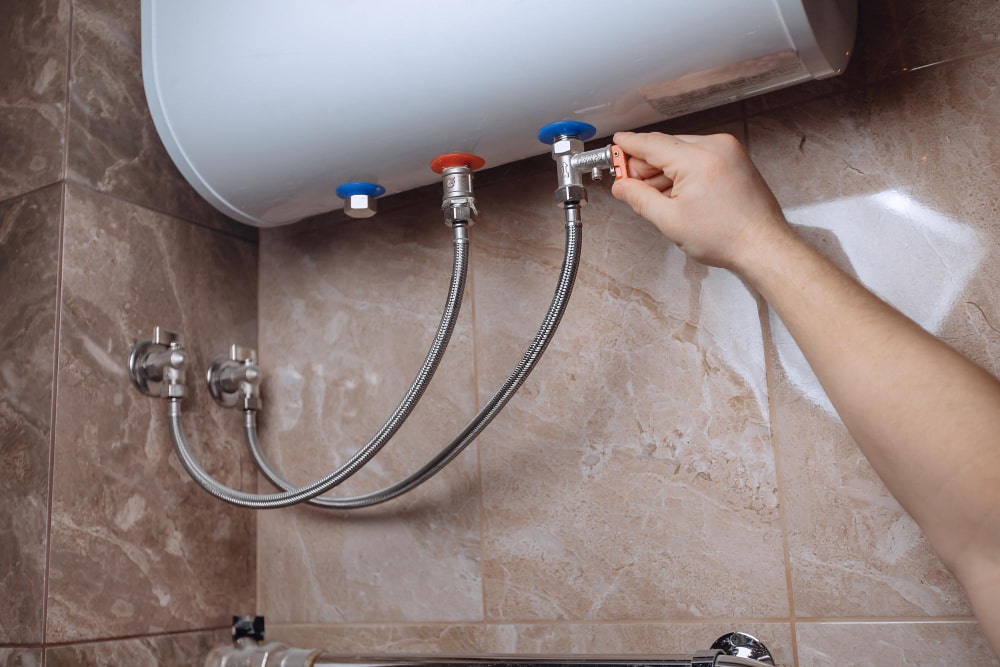What're your thoughts about Tips For Maintaining Your Hot Water Heater?

Warm water is necessary for daily comfort, whether it's for a revitalizing shower or washing recipes. To guarantee your warm water system runs successfully and lasts much longer, regular upkeep is key. This article offers useful ideas and insights on just how to preserve your home's warm water system to prevent disruptions and pricey repairs.
Intro
Maintaining your home's warm water system could seem overwhelming, yet with a couple of straightforward steps, you can ensure it runs smoothly for years to find. This guide covers every little thing from comprehending your warm water system to DIY maintenance tips and knowing when to call specialist aid.
Value of Maintaining Your Hot Water System
Normal maintenance not just extends the life expectancy of your hot water system yet also guarantees it runs effectively. Overlooking upkeep can bring about reduced efficiency, greater energy costs, and also premature failure of the system.
Signs Your Hot Water System Requirements Maintenance
Knowing when your warm water system needs focus can prevent significant issues. Keep an eye out for signs such as irregular water temperature, odd noises from the heater, or rusty water.
Comprehending Your Warm Water System
Prior to diving into maintenance tasks, it's practical to comprehend the standard parts of your hot water system. Usually, this consists of the hot water heater itself, pipelines, anode rods, and temperature controls.
Regular Monthly Upkeep Tasks
Normal monthly checks can help catch minor issues before they intensify.
Purging the Hot Water Heater
Purging your hot water heater gets rid of debris accumulation, enhancing performance and prolonging its life.
Checking and Changing Anode Rods
Anode poles protect against rust inside the storage tank. Checking and changing them when worn is crucial.
Inspecting and Adjusting Temperature Settings
Adjusting the temperature settings makes sure optimum efficiency and security.
DIY Tips for Upkeep
You can execute several maintenance tasks yourself to maintain your warm water system in top problem.
Looking for Leakages
On a regular basis check pipes and connections for leaks, as these can lead to water damages and greater expenses.
Evaluating Stress Relief Valves
Evaluating the pressure relief valve ensures it works properly and avoids too much pressure buildup.
Shielding Pipelines
Protecting hot water pipelines lowers warmth loss and can conserve power.
When to Call a Specialist
While do it yourself maintenance is useful, some problems require expert know-how.
Complicated Issues Requiring Specialist Assistance
Examples include major leakages, electric issues, or if your water heater is continually underperforming.
Regular Expert Upkeep Advantages
Professional upkeep can include extensive inspections, tune-ups, and making certain conformity with safety standards.
Final thought
Normal maintenance of your home's warm water system is essential for effectiveness, long life, and expense financial savings. By following these suggestions and understanding when to look for specialist help, you can guarantee a reliable supply of warm water without unforeseen disruptions.
How to Maintain an Instant Hot Water Heater
Before tinkering with your hot water heater, make sure that it’s not powered on. You also have to turn off the main circuit breaker and shut off the main gas line to prevent accidents. Also turn off the water valves connected to your unit to prevent water from flowing into and out of the appliance. 2. When you’re done, you have to detach the purge valves’ caps. These look like the letter “T†and are situated on either side of the water valves. Doing so will release any pressure that has accumulated inside the valves while at the same time avoid hot water from shooting out and burning your skin. 3. When the purge valves’ caps are removed, you have to connect your hosing lines to the valves. Your unit should have come with three hoses but if it didn’t, you can purchase these things from any hardware or home repair shops. You can also get them from retail stores that sell water heating systems. Read the user’s manual and follow it to complete this task properly. When the hosing lines are connected, open the purge port’s valves. 4. You should never use harsh chemical cleaners or solutions when cleaning your unit. Make use of white vinegar instead. It should be undiluted and you’ll probably use about 2 gallons. 5. Now flush your water heater. This task should probably take about 40 minutes. We can’t give you specific directions for this because the procedure is carried out depending on the type, model and brand of your heater. With that being said, refer to the user’s manual. 6. When you’re done draining the unit, you have to turn off the purge port valves again. Remove the hosing lines that you earlier installed on each of the water valves. Put the valve caps (purge port) back in their respective places and be very careful so as not to damage the rubber discs that are found inside these caps. 7. Now that everything’s back in place, check your user’s manual again to find out how to reactivate your water heating system. 8. Once it is working, turn one of your hot water faucets on just to let air pass through the heater’s water supply pipes. Leave the tap on until water flows smoothly out of it. https://www.orrplumbing.com/blog/2014/september/how-to-maintain-an-instant-hot-water-heater/

As an avid person who reads on Water Heater Maintenance Tips You Can't Afford to Forget, I figured sharing that piece of content was beneficial. Loved our article? Please share it. Let other people discover it. I value your readership.
Call Today